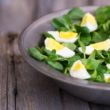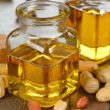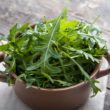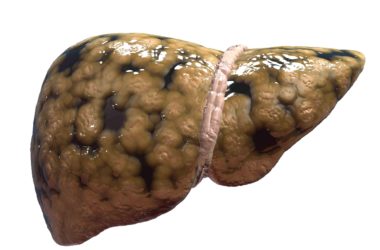Choline is a nutrient that is related to the members of the B-group of vitamins. Because of this, it is important for the regulation of the metabolism and production of energy. While it’s true that the body can make its own choline, the amount is simply not enough. It’s important to obtain more of it by including choline-rich foods in the diet.
Aside from the ones already mentioned above, this water-soluble nutrient is also important for many other things. It is necessary for the creation if DNA, transmission of messages from nerve to nerve, and for the body’s detoxification. Choline is also warranted for the proper functioning of your brain.
There are numerous food sources of choline, and this is the reason why obtaining it in supplement form is not really necessary. However, some people may have a hard time absorbing all the choline content of the food they eat. According to the experts, one of the reasons for such is the presence of certain genes that prevent the nutrient’s absorption.
How can you tell if you need to supply your body with more choline? You will experience fatigue and lack of energy. Your brain functioning may decline too, making it difficult to focus as well as remember and recall information. The mood is also affected, leaving you feeling depressed. Muscle aches and tingling or burning sensation in the extremities may be experienced too because of nerve damage.
To date, scientists are still researching on the full benefits of choline to the body and mind. That’s because it was added to the list of nutrients only back in 1998. What’s more, the pros are still unsure as to how much choline should be obtained via the diet. This list may be used as a guide to maximize the benefits of choline without it causing harm:
• Infants and babies – 125 to 150 milligrams
• Children 1 to 8 years old – 150 to 250 milligrams
• Teens 9 to 13 years old – 250 to 375 milligrams
• Females 14 years old and above – 425 to 550 milligrams
• Males 14 years old and above – 550 milligrams
• Pregnant women – 450 to 550 milligrams
• Breastfeeding women – 550 milligrams
Now let us take a look at some of the top food sources of choline:
- Shrimp – A 4-ounce serving of shrimp yields 153.40 milligrams of choline. Aside from this nutrient, shrimps are also excellent sources of protein, selenium, phosphorous, copper, iodine, and vitamins A, B3, B6 and E.
- Eggs – A medium-sized egg allows you to obtain as much as 146.90 milligams of choline. Additionally, eggs are also loaded with protein, selenium, biotin, molybdenum, pantothenic acid, and vitamins A, B2, B12 and D.
- Chicken – You can get up to 96.73 milligrams of choline in a 4-ounce serving of chicken. Including chicken in your diet is a great idea if you want to get lots of protein but less of those artery-clogging saturated fats.
- Turkey – Every 4-ounce serving of turkey enables you to obtain 94.57 milligrams of choline. Turkey is also a good source of other nutrients such as protein, zinc, selenium, phosphorous, and vitamins B2, B3, B6 and B12.
- Tuna – You can get 88 milligrams of choline per 8-ounce serving of tuna. This oily fish that’s loaded with protein is also a wonderful source of omega-3 fatty acids important for healthy brain, nerves and joints.
- Salmon – Another food from the sea that contains lots of choline is salmon, supplying you with as much as 81.65 milligrams of it per 8-ounce serving. Salmon is also rich in selenium, and vitamins B3, B6 and B12.
- Beef – A 4-ounce serving of beef packs 73.82 milligrams of choline. Beef is also a wonderful source of protein, iron, phosphorous, pantothenic acid, zinc, and even omega-3 fatty acids found abundantly in oily fish.
- Collard greens – Every cup of collard greens yields 72.96 milligrams of choline. Other than this nutrient, collard greens are also rich in fiber, manganese, copper and calcium. They are also amazing sources of vitamin K.












